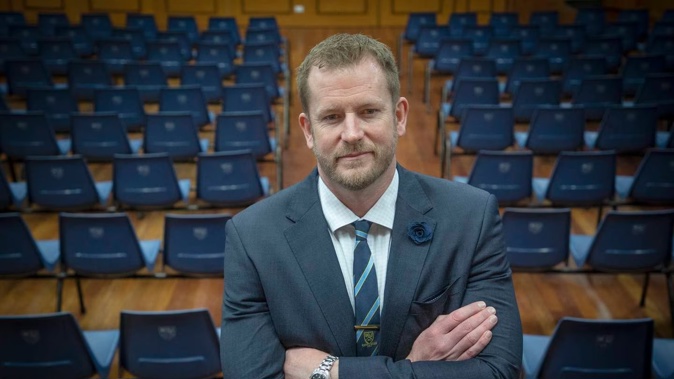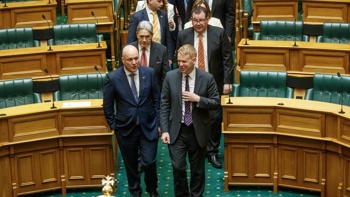
Principals are worried social housing developments being built in zones for lower socio-economic schools could create problems for staff.
Six school leaders want “transparency” on Rotorua’s housing intensification across the board, saying that knowing early about developments would help them better support high needs children.
They wrote to Rotorua Lakes Council saying, in their view, there was “not enough proactive planning and communication” to help schools support students and manage growing numbers.
The submission on council’s Housing for Everyone - Plan Change 9 was made by Western Heights High School principal James Bracefield, Westbrook Primary School principal Colin Watkins, Western Heights Primary School principal Brent Griffin, Lynmore School principal Hinei Taute, Rotorua Intermediate principal Garry de Thierry and Aorangi School’s Kairo McLean.
Some worry schools would not be able to cater to the needs of new enrolments as more homes are built - including social housing.
The principals said new students in social housing might require a high level of learning support due to experiencing trauma and having large learning gaps caused by being “highly transient”.
Being informed of social housing developments would ensure proactive support could be put in place to ensure “a quality transition into schools” for students, they said.
“We need to be informed to be proactive rather than reactive.”
Another concern was that “many of the social housing subdivisions are beginning to appear in the catchment zones for the lower socio-economic schools”.
They said schools in these areas were already under “immense pressure” teaching children “suffering severe trauma, huge learning deficits and significant emotional damage”.
Lynmore School principal Hinei Taute. Photo / Andrew Warner
“Without a strong strategic plan, these schools are going to be confronted with unmanageable environments.”
The principals said they felt “very strongly” without adequate planning, communication and support they would be left to navigate their way through “social dysfunction that is engulfing our school communities”.
Council, government agencies, iwi, principals and NGOs needed to work closely together to “ensure a strategic plan of absolute quality” was formed to manage the “ever-increasing social issue”.
In the submission, the principals also said another concern they had was “how some of the new rules regarding housing intensification with multiple level dwellings being able to be built in residential areas on the same site”.
This had the potential to increase the disparity in some neighbourhoods as developers could potentially look to knock houses down in lower socio-economic areas and build intensified developments because it was “cost-effective,” they said.
Taute told the Rotorua Daily Post issues raised in the October letter “continued to be a concern” for principals.
Transparency about social housing planned for the area would help principals pre-empt challenges and put support in place to help new students settle into school.
Children joining school part way through the year were sometimes disengaged and anxious which could stem from feeling disconnected from their environment.
“It’s almost like the rest of the waka is already sailing and you are just trying to play catch up.”
Support was needed to help them understand school work, make new friends and address food or uniform issues.
Bracefield, who first raised the concerns, said school rolls could grow “quite quickly” once families moved into housing developments resulting in more young people needing additional support.
In these scenarios, principals may have to bring in more staff or establish additional learning programmes, he said.
Meanwhile, Griffin said while there was an “absolute need” for more houses, principals wanted to know exactly what was being planned.
“What we are asking for is there to be some transparency around what is happening.”
Work was under way on a number of public housing developments in Western Heights - including a dwelling on Clayton Rd consisting of three four-bedroom homes.
“The likelihood is there will potentially be 10 children coming from that [development] to our school.”
The school already had students enrolled with “trauma, high academic and behavioural needs”, he said.
Right now systems were in place to cater to them, but Griffin said the school was not equipped to support an influx of children with similar needs.
Rotorua Lakes Council deputy chief executive district development Jean-Paul Gaston said it did not notify schools of new public or market housing developments unless it had a “direct resource management effect on them”.
Developers would also have their own processes around engaging with stakeholders and neighbours, he said.
Gaston said the council, local iwi and government agencies had put in an “immense” amount of work responding to Rotorua’s housing crisis and planning for growth.
Work on the Future Development Strategy (FDS) was under way and principals had been invited to information sessions ahead of community consultation later this year.
Council could not respond to concerns in the submission as the process for Plan Change 9 was still under way.
The Rotorua Daily Post contacted developers for comment. OneWatchman Residential director Marcus Jacobson said the company had engaged with the Ministry of Education about how the development at 31 Ngongotahā Rd could affect school roll growth.
“They forecast forward in terms of what’s coming up to know what they need to allow for from a schooling perspective.”
There had been two community meetings about the 350 home development with another scheduled for the month’s end, he said.
Watchman Residential was also behind the Mountview Green housing development in Rotorua.
/cloudfront-ap-southeast-2.images.arcpublishing.com/nzme/PCUCG24E7PTXM4IS2XWF4IMVFQ.jpg)
Kāinga Ora regional director Darren Toy. Photo / Andrew Warner
Kāinga Ora Bay of Plenty regional director Darren Toy said it was in “regular and ongoing contact” with the Ministry of Education and principals in areas where public housing was planned.
Kāinga Ora had about 300 homes in planning or under construction in the area.
Ministry of Education data showed in 2021 there were about 14,200 school-age students in the Rotorua catchment.
The ministry’s catchment plan said it would meet the needs of the “changing schooling network”, benefiting an estimated 14,000 each year over the next decade to 2030.
Hautū (deputy secretary) Te Tai Whenua Jocelyn Mikaere said regional staff worked closely with local councils to “understand the impact on the education network of housing developments”.
“We monitor school rolls and recommend new classrooms as part of our roll growth programme where needed.”
Rotorua staff were also part of the advisory group for the FDS and had a “close working relationship” with the council around future housing developments.
Mikaere said schools had “coped very well” with additional enrolments occurring as a result of families in emergency housing - many removing barriers providing free uniforms and stationery.
Take your Radio, Podcasts and Music with you

/cloudfront-ap-southeast-2.images.arcpublishing.com/nzme/E3S46JWT35FWBI2YILFXFHNKGA.JPG)








